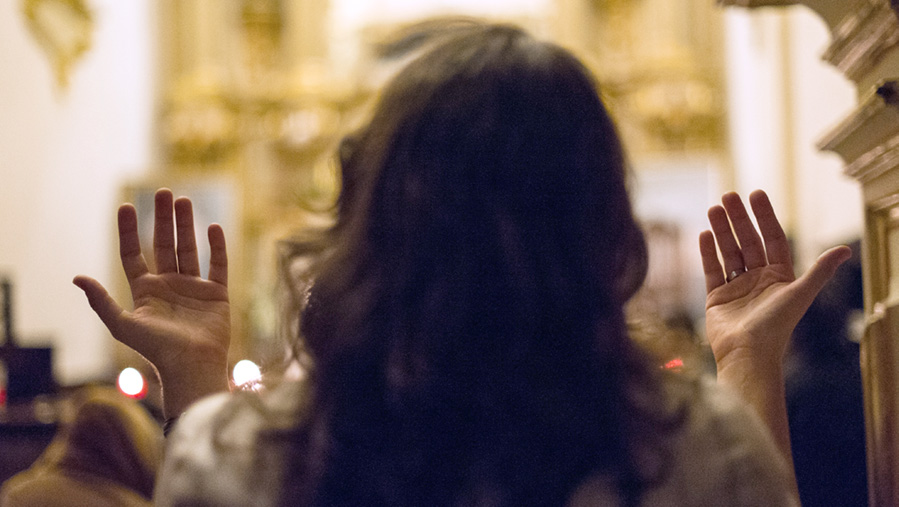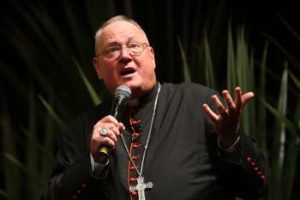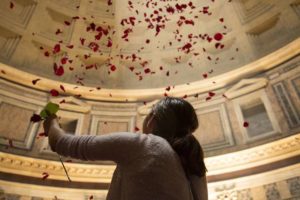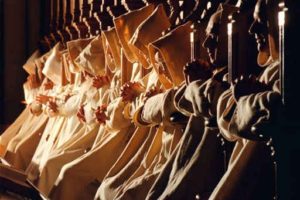A Journey Through the Charismatic Renewal, From Evangelical to Catholic

Published on THE STREAM
By JOSH SHEPHERD Published on April 27, 2018
Part 2 in a series on “Pentecost and the Holy Spirit Today.” Read Part 1.
Most Christians have a narrow view of what the activity of the Holy Spirit looks like. Scenes of loud music and big hair likely come to mind more readily than the reverent chants of Franciscan brothers. These popular notions may be mistaken.
For decades, Keith Fournier has traversed the divides between Catholics and Protestants. Today, he’s a voice for the common good of Christianity in society. His early faith journey led him into the nascent charismatic Catholic renewal.
The Gifts Were in Operation
In the mid-1970’s, his friend Father Michael Scanlan urged Fournier to enroll at Franciscan University of Steubenville, Ohio. Thousands of students there had begun to experience the Holy Spirit. “We saw changed lives,” recalls Fournier. “The charismatic gifts were in operation — prophecy, healing and the like. I realized the power of the Holy Spirit was not reserved for the early church.”
Criticisms came swiftly. Some objected on theological grounds, others to the uninhibited worship atmosphere. “Well-intended friends of mine said, Oh, your church is not going to accept all this stuff,” says Fournier. “Then Pope Paul VI calls all charismatic Catholics to Rome. He welcomes them in, and they’re all singing in tongues in St. Peter’s Basilica! The barriers many expected weren’t there.”
Today, as a deacon in the Roman Catholic Diocese of Richmond, Virginia, Fournier has a long track record of reaching across dividing lines. Before Steubenville, he attended an Assemblies of God Bible college. Decades later, after law school, he and Pat Robertson co-founded the American Center for Law and Justice on Capitol Hill.
His passion remains leading others into a Spirit-filled Christian walk. “It’s the Holy Spirit who guides us into prayer and into all holiness,” he says. “The early missionary efforts of the church relied completely on the power of the Holy Spirit. I don’t believe the Holy Spirit ever left the Church.”
Surprisingly, an evangelical scholar agrees with the Catholic Fournier. “If we look at Church history, we see God continued to work miracles through the centuries,” says author Dr. Michael Brown. “The New Testament explicitly says we should earnestly seek the best gifts. It tells us to pursue prophecy and not to forbid tongues.”
“It warns us against putting out the Spirit’s fire,” he adds. Those flames of belief are often lit at a young age. They were for the young Keith Fournier.
The Hippie Who Found a Higher Purpose
Keith Fournier grew up in an Irish-French Catholic family. He attended a parochial school not far from his Boston home. “I’ll always remember a nun I had in second grade, Sister Patricia,” he says. “She told me I could talk to Jesus as a friend and, if I listened real carefully, I could hear Him respond.”
Life took a turn after a fire destroyed their family home. His parents walked away from practicing faith in the late 60’s, leaving Fournier to his own searching. “I became a teenage hippie,” he recalls. “I got caught up in trying to change the world through politics and all the emerging spirituality of those days.”
Hearing of Woodstock and promises of free love, he hitchhiked across the country in his bell-bottom blue jeans and army jacket. “When I hit California at age 17, it was a treacherous and scary time,” he says. “My parents were worried sick.” At the same time, a Jewish friend of his named Fred had journeyed to Israel to find his roots.
One day, Fournier received an envelope postmarked Jerusalem, Israel. “I went on to the beach and read the letter from Fred,” he recalls. “It began with words from Psalm 119: How can a young man keep his way pure?”
The handwritten pages struck a chord in him. “My Jewish friend went on to tell me he had come to know Yeshua, Jesus, as His Messiah,” says Fournier. The California nomad recalls falling on his knees in the sand. He’s regarded that prayer as a turning point ever since. He tells the story in his book Evangelical Catholics . . . . . .
To read the rest of this article, please visit THE STREAM



